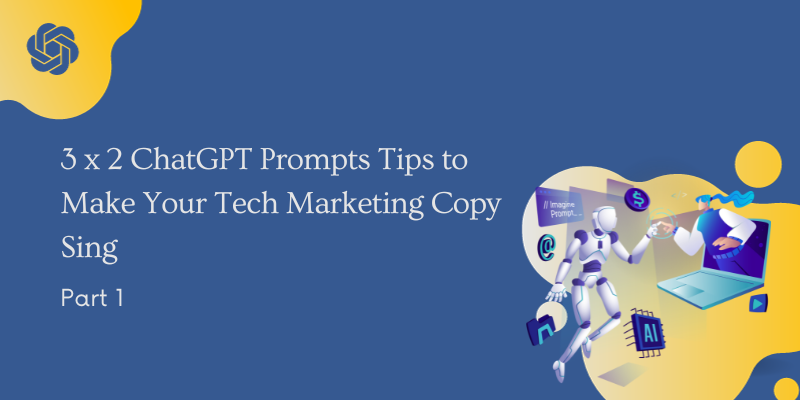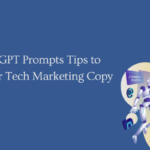Generative AI: These days, you either love it or you hate it. It seems like half the folks out there are sharing thrilling new use cases (medicine! smart contracts! autonomous drones!), while the other half are voicing fears ranging from inaccuracy and misinformation to legal issues, data security, and privacy concerns.
What’s our verdict so far? At IOD, we’re already convinced that generative AI is a great tool for your content creation toolbox… if you know how to use it. And that’s a really big IF.
As we’ve explained before, the results you get working with an AI copilot can be shallow or unreliable. But it turns out that what you get out of AI depends heavily on what you put in; basically, garbage in, garbage out.
The most important factor in generating great results is the prompt you use. Honing effective prompts is what will help you transform ChatGPT into a reliable, always-on content-writing assistant.
And by the way, we’re not just talking about writing. Your content schedule should include a wide range of media types and channels, and generative AI can help you out with them all.
In this post, we’ll share a few prompts that will help you get started using generative AI as your tech marketing content co-writer. Then we’ll wrap up with some tips to get the best mileage from whatever large language model (LLM) you’re using: ChatGPT, Bard, Bing, LLaMA, Claude, or your own personal favorite. And then stay tuned for Part 2, in which we’ll do a deep dive and share effective prompts for even more use cases.
3 Great Use Cases to Get You Started with Generative AI
The best thing about having an LLM copilot is that you never again have to sit there facing a blank page. No matter what you’re doing, your LLM buddy is there to help you get started. Here’s our first crop of top use cases for LLMs, along with sample prompts in each area to get you started.
-
Audience/Market Research
When researching a new audience, generative AI can provide you with insights into their pain points and what they’re looking for or need in a product, service, or platform. Be specific! Identify the primary benefit that you offer users, then find out how to direct it to your intended audience.
Prompts to help you get started:
- What are 5 pain points that [IT system administrators/midlevel IT managers/network engineers] might have when it comes to vulnerability remediation?
- Please generate three personas, including developer, mid-level manager, and C-suite, who might be looking for a platform to help with cloud debugging of distributed applications. For each persona, please include title, goals, challenges, needs, favorite channels through which to get professional and technical information, and the most effective content type to reach this persona.
-
Outlining & Idea Generation
This can be helpful for getting started on a project or for brainstorming new ideas. The AI can generate fresh content ideas based on current tech trends, audience interests, and keyword research. And it can output those ideas in a range of formats, such as blog post outlines, product descriptions, SEO-optimized headlines, or social media captions, to inspire your marketing strategy.
Prompts to help you get started:
- Create an outline for an engaging blog for an audience of DevSecOps developers with sections for PCI-DSS and two other major regulatory standards. Please include a couple of coding dos and don’ts in each section. Then give me five exciting, tech-sounding headlines.
- Please give me a point-form outline of a storyboard for a short (<1 minute) explainer video about VPNs and how they can solve practical problems for businesses of different sizes. Be sure to vary the format to keep viewers interested. Begin with a vivid, attention-getting or alarming fact. [For more on video content, read on!]
-
Email Marketing
Email funnels are an effective way to reach prospects, but facing a blank screen is always a challenge. LLMs like ChatGPT can help you get started, creating overall consistency while letting you spend time personalizing and fine-tuning your messages.
Prompts to help you get started:
- I’m a marketer with ProtecTron, a large network security company manufacturing a range of solutions for cloud, on-prem, mobile, and more. Draft a basic 3-email funnel where a lead has downloaded a white paper about endpoint security from our site. In each short email (under 100 words), we will welcome them, express interest in their needs, and explain how we have them covered. Emails should be fun, not boring, but also professional, respectful, and friendly. Email #1 will offer them a link to a video, email #2 will link to a free trial, and email #3 will offer a phone call with one of our pros. Avoid generic terms like “businesses of all sizes” and instead use specific friendly second-person terms like “you,” “your business,” “your organization,” “your IT department,” etc. Avoid generic terms like “our company” and anything that sounds corporate.
- Write two versions for A/B testing of a cold email for leads gathered at a medical IT trade show. The email will introduce them to our innovative healthcare ERP platform and its benefits, which include helping them achieve 100% charge capture, simplified tracking, and ongoing quality improvement. Please keep it under 150 words and avoid smarmy and inauthentic language. The tone should be friendly but professional. Avoid salesy phrases like “I had the pleasure of meeting you” (at the conference), and incorporate one pain point of healthcare IT administrators. CTA is a free demo.
3 Success Tips for Working with Generative AI
While you’re waiting for Part 2 of this series, where we’ll share even more tried-and-true prompts, here are a few tips to start achieving the best possible results with your favorite LLM:
- Prompt with context. Make prompts as clear and specific as possible. Don’t be afraid to outline style, context, and audience for consistent AI content, even across multiple sessions.
- Iterate. Guide ChatGPT patiently for improved output, integrating helpful instructions into context-setting prompts. If necessary, request changes or additional suggestions. Warning: this can take a ton of patience!
- Know your persona. This is the #1 tip for successful AI prompting. Make sure ChatGPT knows who “you” are, whether that’s an IT professional, a director of security or operations at a mid-size corporation, or a product manager at a large SaaS enterprise. For example, the same broad topic will generate different pain points for different personas:
- SaaS product manager at a large enterprise: Data security and compliance; data recovery and business continuity, scalability and cost efficiency
- Developer at a small startup: Integration and compatibility, version control and code backups, testing, and recovery environments
- VP of product development: Data recovery and downtime mitigation, data growth and scalability, compliance and security / OR / Ensuring that product development processes are not disrupted by backup and recovery activities, that data required for development is readily available, and that development environments are protected against data loss
And always remember to make a note of what works. You’re going to hear that a lot. Working with LLMs can be frustrating, so whenever you get a truly great answer, take a minute to make a note of what worked so you can repeat it next time! As you work with ChatGPT, you’ll build up a knowledge base of useful prompts that you can share with others within your organization.
True, today’s LLMs aren’t exactly the time-saver that they will be once they’re honed, perfected, and hallucination-free. But starting with AI-based content can give you a valuable head start and make the entire content creation process more efficient.
Another way to speed up your content creation machine to keep up with the demanding pace of tech businesses is to collaborate with a content creation partner like IOD. Given our years of experience with a wide range of content types and our passion for technology, IOD’s consultants can help you formulate an effective content strategy and then tap into our network of professionals to help you achieve all your content marketing goals.
To find out more, get in touch today, and stay tuned for Part 2 in this series to explore even more use cases and prompts.






